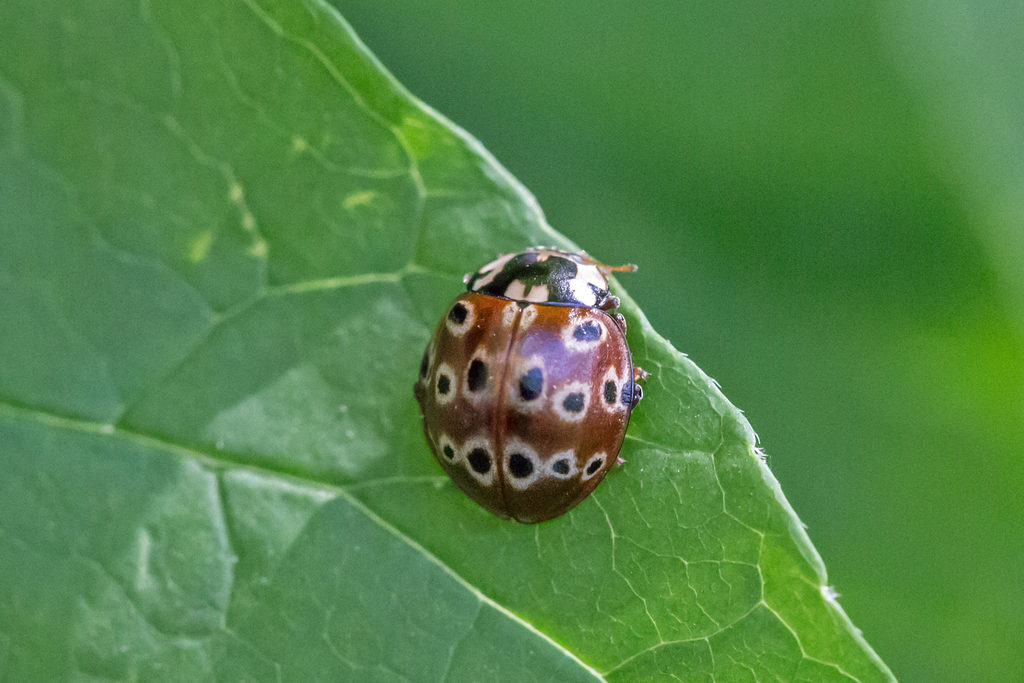
Eye-spotted Lady Beetle © Bill Keim
The Eye-spotted Lady Beetle is native to North America. This species’ color ranges from yellow to brownish-red. Its black spots are surrounded by a lighter ring, hence its name. Its commonly found in areas where aphids are present, especially on trees.
Status
Native
The Eye-spotted Lady Beetle has not received any status rankings in the United States. In Canada, the Eye-spotted Lady Beetle has been ranked as Secure in New Brunswick and Nova Scotia; Apparently Secure in Ontario, Alberta, and British Columbia; and Vulnerable in Manitoba.
Last Seen
2021
Fun Fact
The Eye-spotted Lady Beetle, along with other Anatis species, darkens as it ages.
Identification
The Eye-spotted Lady Beetle is larger than many of the other native species in Vermont, ranging from 7.3 to 10 mm in length.
- Legs are yellow-brown in color.
- The head is entirely black, except for a white spot above each eye.
- The pronotum has a large black patch in the middle, with a white “M” in the center posterior of the black patch. The black patch is surrounded by a white margin on the front and sides. There is one black spot in the margin on either side of the pronotum.
- The elytra (wing covers) are yellow to reddish brown, and darken as the lady beetle ages. The elytra are covered in dark spots, 8 on each elytron, each of which is encircled by a pale ring. The elytra are curved up at the bottom, resembling a turtle shell.
- Often confused with the Fifteen-spotted Lady Beetle.
Habitat
This species is arboreal, typically residing in tree canopies. It will sometimes be found lower. This species is closely associated with conifer trees.
General Range
North to Ontario and British Columbia, south to Virginia and west to Oregon.
Food
Aphids, especially those found on conifer trees.
Life Cycle
The Eye-spotted Lady Beetle has been found to lay its eggs in the lower canopy of conifer trees, and can be found as early as April through October. They are most frequently observed May through July, coinciding with aphid populations in conifer trees. One study showed that the Eye-spotted Lady Beetle’s life cycle was comparatively more synchronized with the life cycle of Mindarus abietinus (Balsam Twig Aphid) than the non-native Asian Lady Beetle, and actively hunted M. abietinus.
More Information
You can find more information about Eye-spotted Lady Beetles using the following links:
Vermont Distribution
Visit the iNaturalist Observation Map and the Occurrence Records to find out where Eye-spotted Lady Beetles have been seen in Vermont.








